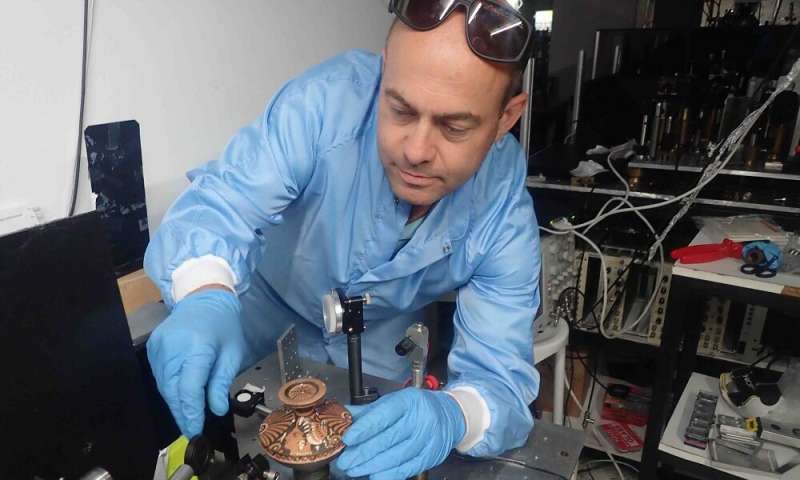Powerful lasers for fragile works of art

"Time alters all things," wrote the Latin poet Horace. Museum conservators would love to prove him wrong. Protecting artworks from the effects of aging requires an understanding of the way materials alter over time. Professor Patrizio Antici of Institut National de la Recherche Scientifique (INRS) has developed a new diagnostic and analytical method for use in cultural conservation, putting his scientific knowledge of lasers and particle accelerators to work for the art world. He describes the new method in an article published in the journal Science Advances.
The bright yellow that Vincent van Gogh used in his paintings darkens over time. Peter Paul Rubens had the same type of paint on his palette and his paintings display the same loss of brightness. To shine a light on the mystery of this darkening, their mythical yellows are now being analyzed using In Air Plasma-Induced Luminescence, or In-Air PIL for short. This careful examination reveals that light causes a change in the quality of the paint crystals, which explains the darkening that is characteristic of certain works.
Developed by Patrizio Antici and his team, In-Air PIL uses a small particle accelerator and a laser-generated photon source. This method rapidly produces a reading of the chemical composition and crystal characteristics on larger surfaces than the leading methods currently in use. By performing a variety of luminescence analyses simultaneously, In-Air PIL reduces the number of complex devices needed for a diagnosis. More compact than comparable technologies and easy to set up, In-Air PIL produces information that can potentially be used to infer an artwork's state of conservation, authenticity, composition, and provenance.
Numerous scientific teams throughout the world are in a race to develop similar approaches. The challenge is to develop alternatives to the PIXE (Particle-Induced X-ray Emission) diagnostic, considered the golden standard in the field, which produces extremely precise analyses but also comes with significant constraints, particularly in terms of cost and infrastructure. "In many cases that kind of extreme precision isn't essential, making In-Air PIL a highly viable alternative," says professor Antici.
The study published in Science Advances lays out the proof of concept that has motivated Professor Antici and his collaborators to pursue their efforts to bring In-Air PIL to market. The device would be aimed at heritage conservators but would also have applications in numerous other areas of material science.
The professor is also a pioneer in developing a new generation of more affordable, laser-driven PIXE. His work in that area has already led to a patent and two articles, including one recently published in Scientific Reports, and triggered a new field of science, now followed by several international research centers.
More information: M. Barberio et al, Pigment darkening as case study of In-Air Plasma-Induced Luminescence, Science Advances (2019). DOI: 10.1126/sciadv.aar6228
Journal information: Science Advances , Scientific Reports
Provided by Institut national de la recherche scientifique





















